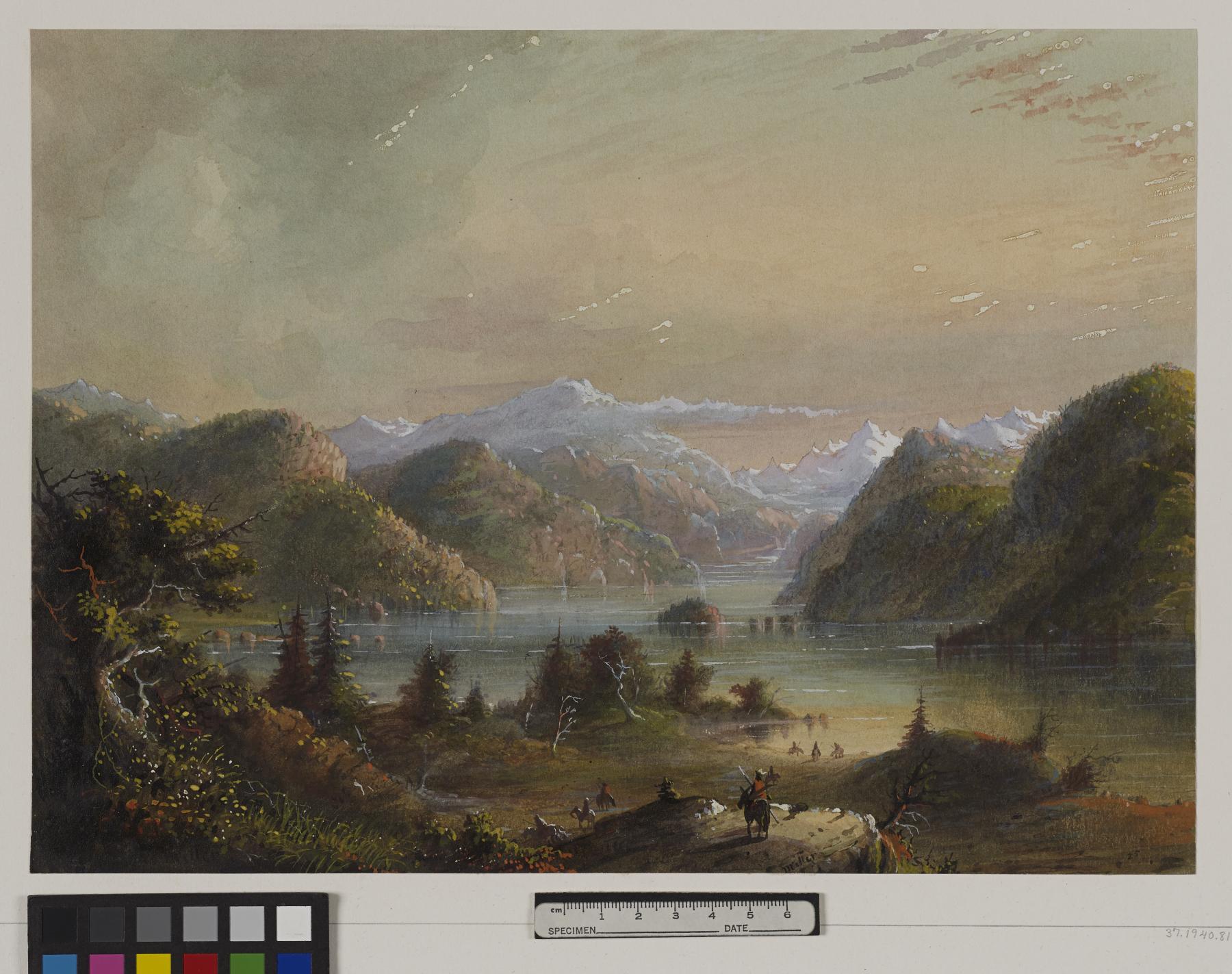Lake Scene with River Mountain
(18th and 19th Centuries )
Extracts from Alfred Jacob Miller’s original text, which accompanied his images of Native Americans, are included below for reference. These words, which shaped how Miller’s contemporaries viewed the watercolors, reveal the racism and sexism embedded in 19th-century exploration and colonization of the western part of what is today the United States.
"We found the way exceeding rough in journeying to these Lakes, and as if that was not enough were digged a great part of the distance by about 20 Crow Indians, who had some cause of grievance with one of our party. As we rode, the Trappers levelled at them fierce expletives in French, interspersed with sac-r-r-r-es, with a fearful roll on the r-r-'s, Enfans des garcés, &c., they of course not understanding a word. At length we rid ourselves of them by riding at night and crossing some mountain Torrents, thereby losing the trail for them.
'No primrose road of dalliance' met our eyes, we scrabled over rocks, through briars and brushwood, crossed rapid streams and ascended steep acclivities. We at least found ourselves on the borders of these beautiful Lakes, and were richly repaid for all our difficulties... The sketch, although conveying some idea, must of necessity fall short of the enchanting reality." A.J. Miller, extracted from "The West of Alfred Jacob Miller" (1837).
In July 1858 William T. Walters commissioned 200 watercolors at twelve dollars apiece from Baltimore born artist Alfred Jacob Miller. These paintings were each accompanied by a descriptive text, and were delivered in installments over the next twenty-one months and ultimately were bound in three albums. Transcriptions of field-sketches drawn during the 1837 expedition that Miller had undertaken to the annual fur-trader's rendezvous in the Green River Valley (in what is now western Wyoming), these watercolors are a unique record of the closing years of the western fur trade.
Inscription
Provenance
Provenance (from the French provenir, 'to come from/forth') is the chronology of the ownership, custody, or location of a historical object. Learn more about provenance at the Walters.
William T. Walters, Baltimore, 1858-1860, by commission; Henry Walters, Baltimore, 1894, by inheritance; Walters Art Museum, 1931, by bequest.
Conservation
| Date | Description | Narrative |
|---|---|---|
| Treatment | repaired | |
| 2/9/1994 | Treatment | examined for exhibition; cleaned |
Geographies
USA (Place of Origin)
Measurements
H: 9 1/8 x W: 12 1/2 in. (23.2 x 31.7 cm)
Credit Line
Commissioned by William T. Walters, 1858-1860
Location in Museum
Not on view
Accession Number
In libraries, galleries, museums, and archives, an accession number is a unique identifier assigned to each object in the collection.
In libraries, galleries, museums, and archives, an accession number is a unique identifier assigned to each object in the collection.
37.1940.81







